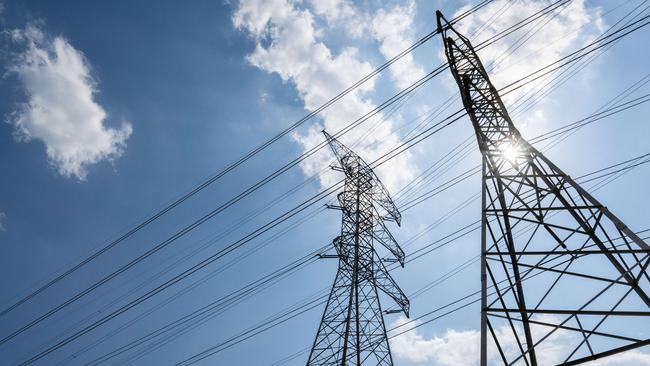Power crisis in east coast could worsen share sell-off: Macquarie analyst
The worsening east coast power crisis increases risks for consumer discretionary spending and corporate margins, and could lead to a sell-off in shares.

The worsening east coast power crisis has potential to magnify a sharp sell-off in shares.
A bigger than expected increase in interest rates and hawkish outlook from the Reserve Bank of Australia, a similarly hawkish view from the European Central Bank, more Covid-19 lockdowns in Shanghai and caution before Friday’s release of US CPI data for May all made for a tough week.
But Macquarie Equities warned that surging electricity costs increased risks for consumer discretionary spending and corporate margins, while creating upside risk to inflation and rate hikes.
The power crisis worsened on Friday after AGL Energy lost half its capacity at the giant Bayswater coal plant, the second-largest power station in the national electricity market, while a breakdown at its Victorian Loy Yang A facility could take an extra two months to fix, the utility warned.
Wholesale prices have surged in the power grid with up to a third of coal generation – which normally provides 60 per cent of supply – currently out of service due to mechanical faults, extended maintenance and supply issues.
It comes after the Australian Electricity Market Operator said the average wholesale electricity prices rose 141 per cent on-year to $87/MWh in the first quarter and spot prices continue to spike, with the average price in the national electricity market above $350/MWh amid increased demand, rising fuel costs and unplanned coal generator outages.
“We are yet to see the downgrades that tend to occur in a weak economy, and it is typically cyclical sectors that see larger cuts,” said Macquarie equity strategist Matthew Brooks. “The surge in electricity costs adds to the earnings risk already present in a range of cyclicals.”
After diving to a four-month low of 6932 points on Friday, Australia’s S&P/ASX 200 share index lost 4.2 per cent for the week. It was the worst week for the Australian sharemarket since a 13 per cent fall in March 2020 when a meltdown in shares and freezing of credit at the start of the Covid-19 pandemic prompted central banks to launch unprecedented stimulus, which boosted asset prices.
The sell-off was even worse for banks, with the sector down more than 10 per cent, which was also its biggest fall since March 2020. Macquarie Group fell 6.4 per cent to a nine-month low of $172.36. Westpac dived 13 per cent to a four-month low of $20.85. ANZ hit a 17-month low of $23.07.
It came as government bond yields continued to shoot higher, narrowing the relative yield compensation for taking a risk in shares. After adding a massive 23 basis points the previous week, Australia’s benchmark 10-year government bond yield rose 19 basis points to an almost eight-year high of 3.67 per cent, while the dividend yield of the S&P/ASX 200 was around 4.75 before franking credits.
If not for a switch to materials, the market sell-off would have been much worse.
The materials sector added 3.8 per cent, with Woodside Energy up about 5 per cent for the second week running. Investors continued to buy shares to preserve their overweight exposures after Woodside’s index weighting expanded with its acquisition of BHP Petroleum.
Macquarie’s Mr Brooks pointed to sharemarket sectors including data centres, materials, food products, supermarkets, metals and mining, oil refiners, telcos, casinos and retail REITs as those most likely to be in the firing line of the energy crisis.
He said stocks with high electricity price exposure before offsets included NextDC, Boral, Adbri, CSR, Orica, Orora, Inghams, Costa, Coles, Woolworths, Rio Tinto, BlueScope, Evolution, Newcrest, Viva Energy, TPG Telecom, Star Entertainment, Crown, and Charter Hall Retail REIT. Boral has some pricing power but its earnings are highly sensitive to electricity prices, while Coles appears to have less exposure than Woolworths due to the former’s hedging policy.
It came as Seven Group chief executive Ryan Stokes warned this week that Boral was among the companies that didn’t predict inflation would spike as high and as fast as it has this year.
Data centre operator NextDC also had a very high earnings sensitivity to electricity prices but was largely expected to pass on higher electricity costs, Mr Books said.
In the resources sector, Evolution, Newcrest and Aurelia Metals and copper miner Oz Minerals as had the highest earnings risk from surging electricity prices.
Mr Brooks also notes that rising diesel prices have a negative impact on the large scale iron ore operations of BHP, RIO and Fortescue Metals, while coal miners are less exposed.
“There continues to be upside risk to power prices in eastern states of Australia, adding cost pressures to miners operating on the east coast … fuel prices have also been surging since the COVID shock in 2020.”




To join the conversation, please log in. Don't have an account? Register
Join the conversation, you are commenting as Logout